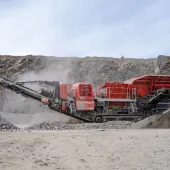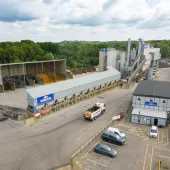Breedon Aggregates to supply Scottish Water
BREEDON Aggregates Scotland (formerly Ennstone Thistle) have been chosen as a key civil materials provider to Scottish Water, in the largest supply contract the company has won to date.
The news comes on the back of the recent acquisition of Breedon Holdings Ltd, owners of the former Ennstone businesses, by Marwyn Materials Ltd, an AIM-listed company formed by industry veterans Peter Tom CBE and Simon Vivian to make acquisitions in the building materials sector.
As a result of this acquisition, Ennstone Thistle and sister company Ennstone Johnston in England have been renamed Breedon Aggregates Scotland and Breedon Aggregates England respectively.
The new agreement with Scottish Water is for a four-year contract, with the option of a four-year extension. The majority of the civil material supplies are expected to be used in Scottish Water’s capital investment projects.
The deal effectively makes Breedon Aggregates Scotland one of the preferred suppliers of concrete, asphalt and aggregates for the vast majority of the area from the Forth/Clyde estuary northwards.
Alan Mackenzie, Breedon Aggregates Scotland’s chief executive officer, said: ‘We are delighted that the quality, innovation and consistency of our products and services have been recognized. This contract has a multi-million pound potential and is the biggest we’ve won to date.
‘As Ennstone Thistle, we built strong, stable relationships with our customers, something that enabled the business to perform well in difficult trading conditions. We look forward to taking that further as Breedon Aggregates….growing our client base in Scotland as the market improves and demand for construction supplies increases.’
With 29 quarries, 19 asphalt plants and 27 concrete plants in England and Scotland, Breedon Aggregates Ltd are the largest independent operators in the UK aggregates sector after the five global majors. The group employs around 700 people and has approximately 180 million tonnes of mineral reserves and resources, providing an estimated life of around 50 years at current output levels.









